
-
Find the right food for your pet
Take this quiz to see which food may be the best for your furry friend.
Find the right food for your pet
Take this quiz to see which food may be the best for your furry friend.
Featured products
 Adult 7+ No Corn, Wheat, Soy Chicken & Brown Rice Dog Food
Adult 7+ No Corn, Wheat, Soy Chicken & Brown Rice Dog FoodSupports energy level and beautiful coat in mature dogs
Shop Now Adult 7+ Perfect Digestion Chicken, Whole Oats & Brown Rice Recipe Dog Food
Adult 7+ Perfect Digestion Chicken, Whole Oats & Brown Rice Recipe Dog FoodScience Diet's breakthrough nutrition supports ultimate digestive well-being & healthy microbiome for dogs age 7+
Shop Now Adult Perfect Weight & Joint Support Chicken Recipe Dry Dog Food
Adult Perfect Weight & Joint Support Chicken Recipe Dry Dog FoodThis weight management and mobility support dog food was created with Hill’s unique understanding of the biology of overweight dogs.
Shop NowFeatured products
 Adult Perfect Digestion Chicken, Barley & Whole Oats Recipe Cat Food
Adult Perfect Digestion Chicken, Barley & Whole Oats Recipe Cat FoodScience Diet's breakthrough nutrition supports ultimate digestive well-being & healthy microbiome
Shop Now Adult Savory Chicken Entrée Cat Food
Adult Savory Chicken Entrée Cat FoodPrecisely balanced nutrition with the delicious taste of savory minced chicken to help fuel the energy needs of cats during the prime of their life
Shop Now Perfect Weight Salmon & Vegetable Canned Cat Food
Perfect Weight Salmon & Vegetable Canned Cat FoodOver 70% of cats lost weight within 10 weeks when fed this nutrition
Shop Now -
Dog
- Dog Tips & Articles
-
Health Category
- Weight
- Food & Environmental Sensitivities
- Urinary
- Digestive
- Joint
- Kidney
-
Life Stage
- Puppy Nutrition
- Adult Nutrition
- Senior Nutrition
Cat
- Cat Tips & Articles
-
Health Category
- Weight
- Skin & Food Sensitivities
- Urinary
- Digestive
- Kidney
-
Life Stage
- Kitten Nutrition
- Adult Nutrition
Featured articles
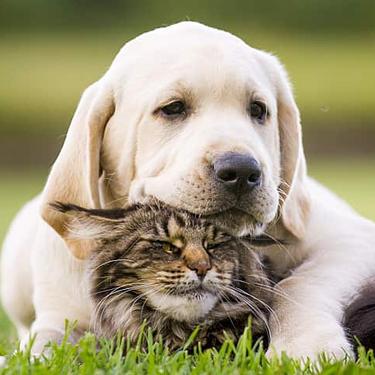 The Incredible Science Behind Your Pet's Microbiome
The Incredible Science Behind Your Pet's MicrobiomeLearn what a pet's microbiome is, how it contributes to your pet's gut & overall health, and why nutrition is important in maintaining healthy microbiomes.
Read More Pet Food Storage Tips
Pet Food Storage TipsDiscover how and where to store your dry, as well as canned, dog and cat food. Learn how to find the "best before" dates on all Hill's pet food packaging.
Read More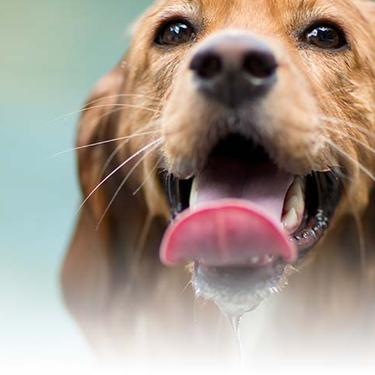 Water
WaterDiscover why water is the most important nutrient for your dog or cat to live a healthy life. Find out how much water your pet should consume each day.
Read More -
Find the right food for your pet
Find the right food for your pet


As a pet parent you want to do everything you can to care for your pet; this involves regular, everyday activities to ensure they stay happy and healthy. Practice these ten responsible pet care tips year after year for a lifetime of happy and healthy cats and dogs.
1. Veterinarian Visits
Responsible pet ownership starts with regular visits to the veterinarian. Given their shorter-than-human lifespan, your dog or cat should be getting a checkup at least once or twice a year. Depending on your pet's vaccination schedule, they may go more frequently when they're young, but establishing and maintaining good pet health means keeping up with vet visits as they age.
Trips to the vet can be, shall we say, challenging. Cats, in particular, may be averse to leaving the comfy confines of their home, but there are ways to reduce stress for both of you. Acclimating your cat to her carrier when she is a kitten is good practice (and avoids the running-away-and-hiding-under-the-bed scenario). Dogs tend to like going for car rides. Take your pup on joyrides, so he won't associate getting into the car with going to the vet. And many pets don't mind a trip to the veterinarian's office, especially if you choose a vet that's a good fit for your little friend.
2. Vaccinations
Vaccinating your pets is a vital component of responsible pet care. Soon after welcoming your new pet into your home, schedule an immunization appointment. During your first visit, the vet will set up an immunization schedule for your little pup or kitten to protect them from illness and disease. Vaccinations for puppies should happen early in your puppies first few weeks after you bring him home. Talk to your vet at your first appointment, on when a good time to schedule that visit. They help prevent diseases such as rabies, Lyme disease, and distemper. Cats benefit from vaccines that prevent feline herpes virus, feline leukemia, and rabies. If you've adopted an adult or senior animal, make sure they are immunized, too. Vaccinations do need renewal and aren't just for young pets.
3. Proper Identification
If the unthinkable happens and your little guy or gal gets lost — youngsters in particular are prone to dashing out the door — having proper identification is the key to a happy ending. Start with the basics: a safe collar, and a tag that contains all of your contact information. In addition to an ID tag, microchipping your pet is advisable, because there's always the chance a collar will fall off. The microchip, an electronic device about the size and shape of a grain of rice, is implanted under your pet's skin and can be read by a scanner that pulls up your identification information. A combination of these forms of identification will go a long way to reuniting you and your beloved pet, but only if you keep your contact information up-to-date. Be sure to change your information on file with the microchip if you have a change in address or phone number.
4. Spaying/Neutering
Sterilizing your pet prevents a host of health problems, including complicated pregnancies, and reduces the number of homeless animals. Spaying your kitty (removing the uterus and ovaries) greatly reduces her risk for cervical cancer, eliminates the risk of ovarian cancer, and prevents her from going into "heat." That minimizes the chance that she'll stray from home in search of a partner, and any nearby male cats will be less aggressive (and they won't spray to mark their territory, something that benefits you and your furniture). Neutering your puppy helps alleviate aggression and roaming the neighborhood, and will prevent him from getting testicular cancer. Because spaying or neutering is surgery that requires general anesthesia, your pet will likely stay overnight at the vet's office for at least one night for observation and recuperation.
5. Healthy Food
Two connected elements of responsible pet ownership include providing animals with fresh, cool water and healthy food at all times. The right pet food will enrich your best buddy's life, providing them with the energy and nutrients they need. With so many meal options to choose from, it can be daunting, but you can become adept in no time by familiarizing yourself with important ingredients and how they help your pup or kitty. When choosing the best cat food, look for a good balance of protein, carbs and fats. These are important ingredients for dog food, too, as is plenty of fiber for the digestive system. In addition to healthy ingredients, select a pet food formula that is appropriate for your pet's age, health conditions and activity level, and speak to your vet before switching your pet to a specialized food.


Tasty Tips
Young pets may need several visits in their first year for vaccinations. Adult pets generally benefit from annual check-ups, while senior or special-needs pets might require more frequent visits.
6. At-Home Care
As your pets' caretaker, your job is to provide them with good hygiene habits at home as well as at the vet's or groomer's. Brushing their teeth, combing their coats and providing them with healthy food all keeps them in tip-top shape. To stay on track with responsible pet care, schedule hygiene and grooming tasks in your calendar and try combining tasks, such as a comforting comb after trimming nails, until it becomes routine.
7. Comfy Quarters
As the seasons change or you rearrange your living space, take a look around to see that you're providing your pet with a safe, cozy habitat. Dog bed looking a little flat? Buy your pup a new one. Litter box area not cutting it anymore? Spruce up your kitty's bathroom with a new box and scoop. This also is a good time to check for potential hazards. Look for exposed cords or wires (young animals find these to be great chew toys), secure safety gates, repair loose windows or screens and remove any plants that are poisonous to your pet.
8. Training and Socializing
One of the most important aspects of responsible pet care is ensuring your dog or cat is well-trained, and proper socializing is a part of that. Starting when they're young is best and most effective, but it's never too late to learn new tricks. Toilet training is the number one priority for any animal with whom you share your home, as is working on obedience training. Learning socialization skills will help your puppy or kitten bond with you and with other pets. Ask your vet or local animal shelter for recommendations for good trainers in your area or at-home training guides to read. A well-trained pet is a happy pet, and that translates to a happy pet parent.
9. Following Dog Park Rules
Taking your dog outside to play is one heck of a good time, and, being the social creatures they are, dogs love a good romp outdoors. If you decide to take your pup to a dog park, abide by the posted rules. Proper dog park etiquette, such as bringing your own toys and not bringing in food, keeps everyone safe, especially if a dog is aggressive or under-socialized. Bring along treats for afterward to reward your guy for his good behavior. Vets also recommend that you wait until your dog is at least four months old before bringing him to the dog park to ensure he's vaccinated before being exposed to other animals.
10. Safe Playtime
It's no secret that dogs and cats love to play, and it's an effective relationship-building activity. Take stock of their toys. Are they safe? Be mindful of threadbare stuffed toys that pose choking hazards and hard, sharp edges that could cause injury. Throw away and replace playthings that are worn out. Making DIY cat toys and dog toys is a great, inexpensive way to bring even more fun to pet parenting!
Remember, these tips aren't applicable just during pet holidays — make them part of your regular pet parenting role, and you and your pets will reap the benefits for a lifetime!


Christine O'Brien is a writer, mom, and long-time cat parent whose two Russian Blues rule the house. Her work also appears in Care.com, What to Expect, and Fit Pregnancy, where she writes about pets, pregnancy, and family life. Find and follow her on Instagram and Twitter @brovelliobrien.
Related products
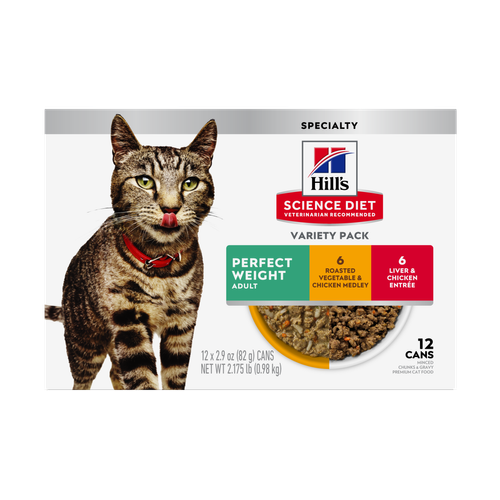
Feline Adult Perfect Weight Variety Pack

Over 70% of cats lost weight within 10 weeks when fed this nutrition

Precisely balanced nutrition with the delicious taste of savory minced chicken to help fuel the energy needs of cats during the prime of their life

Science Diet's breakthrough nutrition supports ultimate digestive well-being & healthy microbiome
Related articles

Discover how and where to store your dry, as well as canned, dog and cat food. Learn how to find the "best before" dates on all Hill's pet food packaging.

Learn what a pet's microbiome is, how it contributes to your pet's gut & overall health, and why nutrition is important in maintaining healthy microbiomes.

Discover why water is the most important nutrient for your dog or cat to live a healthy life. Find out how much water your pet should consume each day.
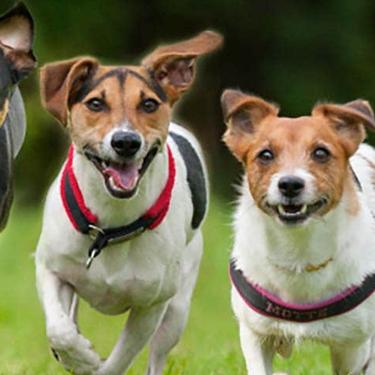
Discover how antioxidants fight against free radicals in your dog or cat's body, and why they are so important to your pet's diet.
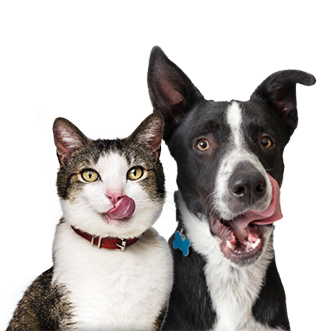
Put your pet on a diet without them knowing
Our low calorie formula helps you control your pet's weight. It's packed with high-quality protein for building lean muscles, and made with purposeful ingredients for a flavorful, nutritious meal. Clinically proven antioxidants, Vitamin C+E, help promote a healthy immune system.
Put your pet on a diet without them knowing
Our low calorie formula helps you control your pet's weight. It's packed with high-quality protein for building lean muscles, and made with purposeful ingredients for a flavorful, nutritious meal. Clinically proven antioxidants, Vitamin C+E, help promote a healthy immune system.



